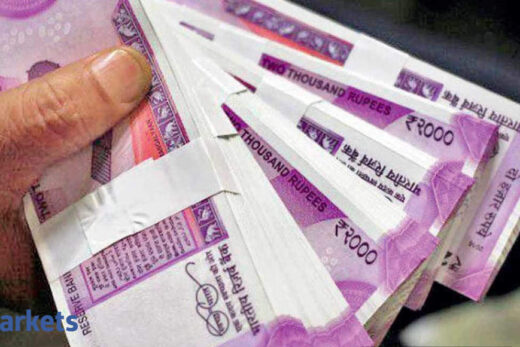P2P lending is the practice of lending money to individuals via an online platform that connects lenders with borrowers. This mode is useful for both lenders and borrowers because the former can earn a higher interest rate (than bank savings account or many other debt instruments) and the latter can obtain funds (unsecured loans) at lower rates than what banks or nonbanking financial companies (NBFCs) offer. India has nearly 20 P2P lenders, with a combined outstanding loan book of around ₹5,000 crore. These entities are regulated by the RBI.
 Agencies
Agencies“We do nearly ₹130 crore worth of loan disbursals every month. Over the past one year, we have grown over 30 times,” said Rajat Gandhi, founder and CEO of Faircent, which claims to have a loan book worth ₹2,000 crore. “Our volumes shot up after we rolled out a string of new products for both lenders and borrowers. At a portfolio level, we are able to deliver 12-15% returns, after adjusting for expenses and defaults,” he adds.
The bulk of the lenders filling up the rosters of prominent P2P platforms are return-hungry retail investors and traders with surplus cash flows. Several high net worth individuals and family offices are writing large cheques favouring borrowers on these platforms.They are prompted to lend on platforms because their traditional fixed-income investments – such as bank fixed deposits, savings accounts, debt MFs, debentures and corporate FDs – are yielding 3-7% on an annual basis.
Diversifying Investment Portfolio
“Apart from P2P lending, there’s no asset class that is yielding 14-16% annual returns in the current scenario,” said V Shankar, founder-director, I-lend, a P2P platform that is planning to restart operations after it stopped loan disbursals last year, when the first wave of Covid-19 struck the country. “We have lenders asking us to resume operations. There’s a lot of interest now. With macroeconomic factors looking good, and people having enough savings due to WFH, there’s more willingness to lend at a higher interest rate.”
For lenders (investors), giving loans on a P2P platform is a way to diversify their investment portfolios even further. Many a time, they route their stock market gains or monthly surpluses to generate higher returns. A lot of financial advisors and wealth managers are also advising their clients to lend on P2P platforms, but they do not recommend an exposure exceeding 10% (of the total investment portfolio) to this asset class.
Borrowers are flocking to P2P lenders because most banks and NBFCs have gone slow on disbursing personal loans to customers with relatively lower credit scores. Also several fintech and digital lenders (especially those that did small-ticket, short-tenure, pay-day loans) have been put out of business by law enforcement agencies a few months ago, as they indulged in unethical collection methods to recover loans. This has forced borrowers to tap the peer-to-peer network for funds. The loan ticket size of most P2P lenders ranges between ₹50,000 and ₹70,000 – often given for a period of 12 months. These loans are disbursed at 10-18% interest rates, depending on the credit profile of the borrower.
“The quality of borrowers has gone up because we get a lot of bank/NBFC customers as well these days. There is a lot of awareness about credit now,” said Bhavin Patel, founder-CEO of LenDen Club, which currently has a loan book worth ₹700 crore. “Even new-to-credit customers are knowledgeable about various loan products. This has helped P2P business grow considerably over the past three years. Compared with pre-Covid levels, we are doing 12 to 15 times more transactions now,” he adds.



